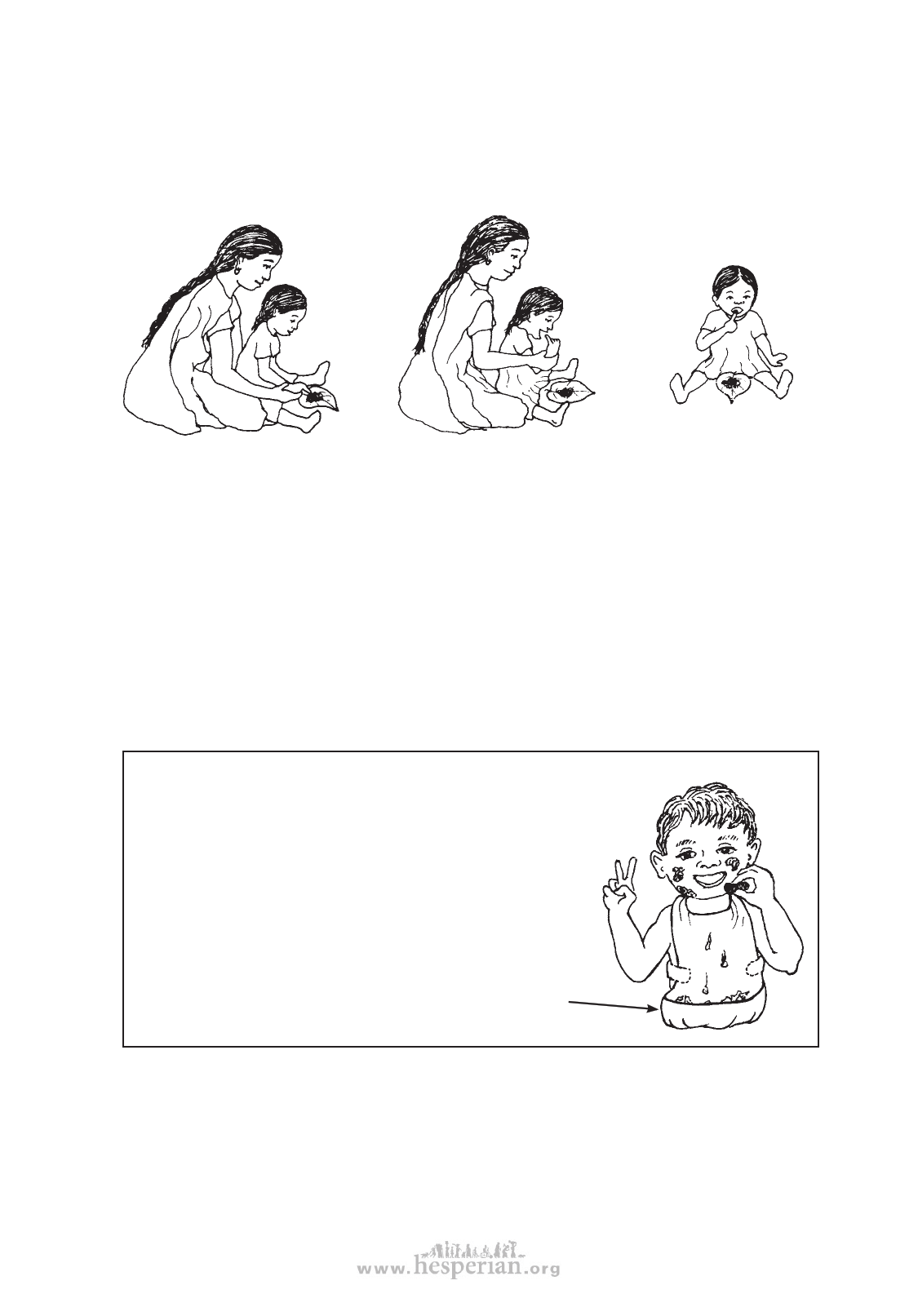
When a child is slow in using her hands to grasp things, or to take things to her
mouth, you can help her discover how to use her hands and feed herself, like this:
FEEDING
327
Put the child’s
finger in a food she
especially likes.
Then lift her
finger to her
mouth.
Help her to do more
and more, step by
step, until she does
it alone.
Little by little help her less and less. Lift her hand to her mouth and touch her lips with
the food. See if she will then put it into her mouth. When she has learned this, lift her
hand near her mouth and see if she will do the rest. Next just put her finger in the food
and encourage her to lift it to her mouth. Each time she does more for herself, praise
her warmly.
This method is part of a ‘behavioral approach’ to teaching new skills. The same
approach can be used for teaching the child many skills related to eating, such as using
a spoon or drinking from a glass. To learn more about this approach, see Chapter 40,
“Ways to Improve Learning and Behavior.”
IMPORTANT: Try to make mealtime a happy time.
Remember that it takes time for any child to learn
new skills, and that a child learns best when he plays.
When any child first learns to eat for himself, he makes
a mess. Be patient, help the child to become more
skillful at eating, praise him when he does well, but
at the same time let him enjoy himself and his food.
Remember, even normal children often do not learn to
eat cleanly and politely until they are 5 or 6 years old—or
even older.
A cover or ‘bib’ like this, of
plastic or waterproof cloth, is
a big help. The pocket at the
bottom catches spilled food.
While it is important not to push or hurry children too much in developing feeding
skills, the opposite is also true. Often parents wait too long and do not expect enough
from their disabled child. On the next page is a ‘trick’ that a rehabilitation worker uses
to help parents awaken to the ability of their mentally slow child to learn new skills.
disabled village children